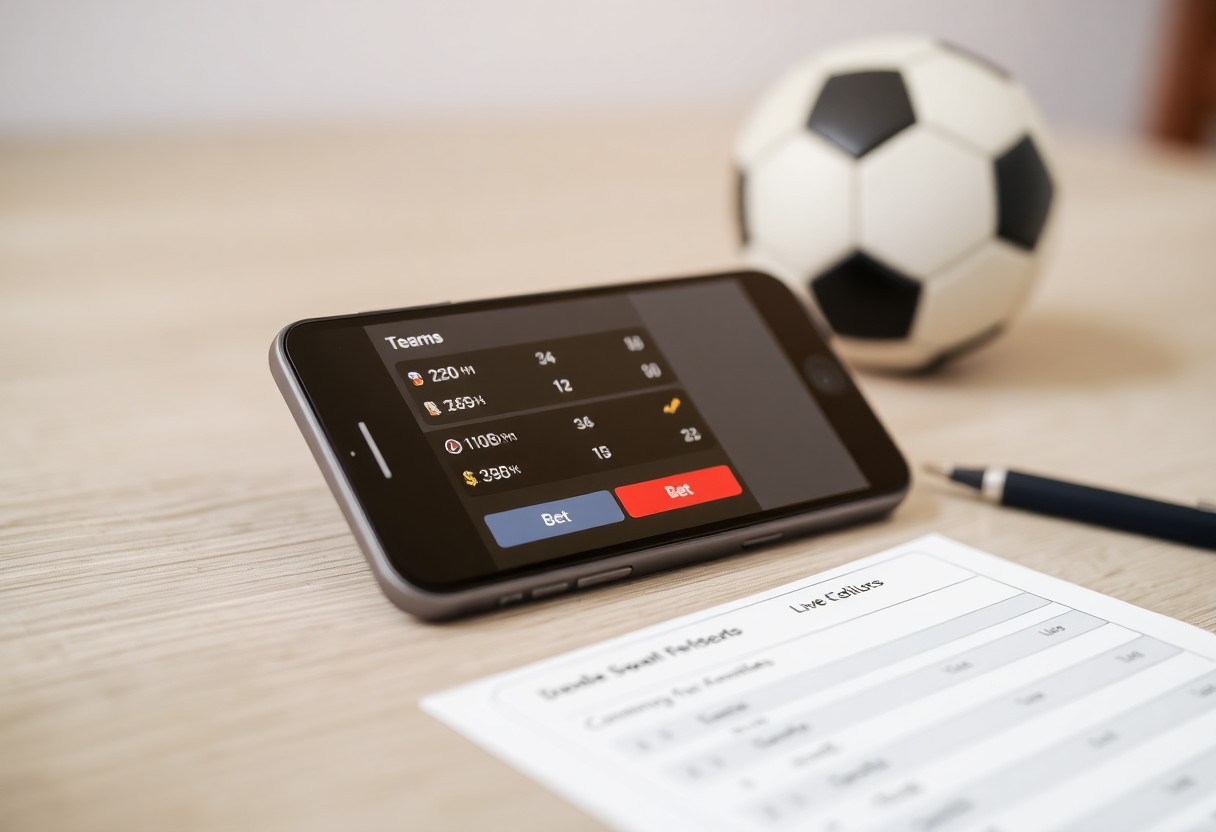There’s a powerful metric in sports betting that can elevate your strategy: Closing Line Value (CLV). Understanding how to use CLV effectively can provide you with valuable insights into your betting skills and decision-making processes. By comparing the odds you placed your bets at with the closing line, you can assess whether you have consistently identified favorable situations. This post will guide you through the practical steps to calculate and interpret CLV, helping you refine your approach and enhance your betting performance.
Understanding Closing Line Value
To measure your betting skill effectively, it’s necessary to grasp the concept of Closing Line Value (CLV). This metric compares the odds at which you placed your bet to the final odds available just before the event starts, providing insight into the effectiveness of your betting decisions.
Definition of Closing Line Value
Understanding closing line value entails evaluating the difference between the odds you secured and the closing odds. This measure reflects whether you made a profitable bet relative to the market, with positive CLV suggesting that you consistently identify advantageous betting opportunities.
Importance in Betting Skill Measurement
Any serious bettor should recognize the significance of CLV in determining your skill level. By tracking your CLV over time, you can assess whether your betting strategy generates consistent value against the market and thereby hone your approach for better long-term results.
Understanding the importance of CLV allows you to identify patterns in your betting performance. By consistently achieving a positive closing line value, you demonstrate an ability to forecast line movements more accurately than the general betting public. This advantage indicates a solid grasp of the betting landscape and highlights areas for potential improvement. Focusing on CLV helps you refine your strategy, ensuring you make educated decisions, ultimately impacting your overall profitability.
How to Calculate Closing Line Value
Clearly, calculating Closing Line Value (CLV) is important for evaluating your betting skill. CLV is the difference between your bet’s odds and the closing odds, reflecting your ability to identify value before it disappears. A positive CLV indicates a well-timed wager, while a negative one suggests you missed out on value.
Gathering Necessary Data
An effective calculation begins with gathering the right information. You will need your original odds at the time of your bet and the closing odds at the event’s start. Accurate data is vital for an authentic analysis of your betting performance.
Step-by-Step Calculation Process
While the process may seem complex, breaking it down into steps simplifies your calculations. Follow this structured approach to calculate your CLV:
| 1. Record your opening bet odds. | Example: 2.00 |
| 2. Note the closing odds just before the event. | Example: 1.80 |
| 3. Calculate the CLV. | CLV = (Closing Odds – Your Odds) |
| 4. Analyze the result. | Positive or negative CLV. |
Understanding this calculation allows you to measure your betting skill over time. By consistently applying this method, you will gain insights into whether you are consistently betting on favorable odds. A systematic approach provides a clear picture of your ability to identify value and adjust your strategy as necessary. Tracking your CLV can further refine your decision-making, enhancing your overall betting success.
Factors Influencing Closing Line Value
Some factors can significantly affect your Closing Line Value (CLV) and ultimately your betting performance. Consider the following:
- Market movements
- Player injuries
- Public betting trends
- Team news
Thou must be aware that these elements can greatly impact your overall betting success.
Market Dynamics
Any bettor should pay close attention to market dynamics, as they reflect the shifting perceptions of odds throughout the betting landscape. Understanding how the odds move in response to betting volume can help you identify when a favorable opportunity arises, enhancing your overall betting strategy.
Player Performance and Trends
Closing line value is heavily influenced by how well players are performing and the trends emerging throughout a season. Factors like recent game statistics, match-ups, and overall performance should guide your betting decisions.
Dynamics in player performance can make or break your betting strategy. Monitoring individual player statistics and injury reports allows you to anticipate movements in the closing line and adjust your bets accordingly. Furthermore, looking at trends, such as a player’s form over several games, will enable you to uncover hidden values that might give you a positive edge. Staying informed about player performance helps you time your bets for maximum benefit.
Tips for Improving Betting Skill
Keep enhancing your betting skill by focusing on several key areas:
- Consistently track your performance.
- Examine and analyze your bets critically.
- Learn from your mistakes and successes.
- Stay updated with market trends.
Recognizing these strategies will empower you to make informed decisions and elevate your overall performance.
Analyzing Historical Data
Clearly, analyzing historical data is important for developing your betting skill. Look back at past games, performances, and outcomes to identify patterns and trends that inform future bets. This data can reveal insights about particular teams or players that you might not have considered previously.
Utilizing Advanced Statistical Methods
Improving your betting skill can be significantly aided by utilizing advanced statistical methods. These methodologies provide deeper insights and allow you to make data-driven decisions:
- Employ predictive analytics to forecast outcomes.
- Utilize regression analysis for finding relationships within data.
- Apply machine learning to refine your betting model.
It’s important to understand how these advanced techniques can enhance your betting strategy by deriving actionable insights and reiterating your decision-making process. With this knowledge at hand, you can effectively evaluate and adjust your approach based on past performance as well as current conditions.
Betting Techniques
| Technique | Description |
| Predictive Analytics | Utilizes historical data to forecast future events. |
| Regression Analysis | Helps identify the relationship between different variables affecting outcomes. |
| Machine Learning | Refines predictions through automated learning from outcomes. |
By mastering these advanced statistical methods, you’re setting yourself up for a more successful betting experience. You will find that your analytical skills improve as well as your ability to predict outcomes with higher accuracy, ultimately leading to more profitable betting habits. It’s important to stay engaged with your data and adapt your strategy when necessary to maintain your edge.
Evaluating Your Betting Performance
All successful bettors understand the importance of assessing their betting performance. By evaluating your results, you can determine whether your strategies are effective and identify areas for improvement. Regularly analyzing your bets and their outcomes helps you refine your approach and enhance your overall betting skill.
Setting Benchmarks
Even the best bettors need to set benchmarks for success. By establishing target closing line values or win rates, you can measure your performance against these standards. This will help you identify if your current betting strategy is effective or if adjustments are needed to maximize your potential.
Tracking Your Closing Line Value
Betting successfully requires diligent tracking of your closing line value. Monitoring this metric allows you to see how often you secure favorable lines compared to the final odds. By analyzing this data over time, you can assess whether you consistently beat the closing line, a key indicator of your betting expertise.
Closing line value provides crucial insight into your betting performance. If you consistently achieve a positive closing line value, it suggests you have an edge over the market, showcasing your ability to identify quality betting opportunities. Conversely, a negative trend may indicate that you need to reassess your strategies or tighten your bankroll management. By focusing on the most significant bets and continually refining your approach, you can improve your overall betting success.
Common Mistakes in Measuring Skill
Your ability to evaluate your betting skill can be undermined by several common mistakes that you should avoid. Relying on incomplete data or misinterpreting statistics can lead to an inflated sense of your capabilities. Furthermore, overlooking external factors that influence betting outcomes can result in skewed assessments of your performance. By being aware of these pitfalls, you can develop a more accurate understanding of your betting skill and make more informed decisions moving forward.
Misinterpretation of Data
The most prevalent mistake in measuring your skill is the significant misinterpretation of data. You might mistakenly focus on raw outcomes rather than understanding the context behind them, such as variance or sample size. A few lucky wins can provide a false impression of skill, while losing streaks can overshadow your strategic capabilities. It’s imperative to analyze your betting history comprehensively for a clear evaluation of your true performance.
Ignoring External Factors
Even the most seasoned bettors can falter by ignoring external factors that might affect their results. Various elements such as market fluctuations, injuries, or weather conditions can significantly impact outcomes. When evaluating your skill, consider how much these factors have influenced your betting results. Doing so can provide a more balanced perspective on your actual performance. Here are key aspects to keep in mind:
- Effects of market volatility on your selections
- Impact of team injuries or changes on the game
- Influence of external events such as weather
Recognizing these external variables can lead to a more nuanced interpretation of your betting skill, avoiding the dangerous trap of overconfidence.
Skill evaluation goes beyond self-assessment; it requires you to consider the complex interplay of various factors. For instance, while trends in betting may reflect your tendencies, they may not account for changes in public perception or critical injuries. Consequently, evaluating your performance without considering these elements could provide a misleading picture. It’s imperative to analyze not just your betting records, but to understand the context surrounding those records to refine your approach effectively. Recognizing these influences can empower you to make smarter betting decisions.
Final Words
Conclusively, utilizing closing line value is an effective way to assess your betting skill. By tracking how often you achieve positive CLV, you can gain insight into your decision-making process and identify areas for improvement. This statistical measure acts as a benchmark, allowing you to compare your results against market movements. By consistently focusing on obtaining better closing prices, you enhance your overall betting strategy and increase your chances of long-term success. Embrace this method as part of your analysis to evaluate your betting prowess accurately.




